
Tips on finding the right project.
- Subject:
- Education
- Material Type:
- Primary Source
- Author:
- Defined Learning
- Date Added:
- 08/16/2023

Tips on finding the right project.
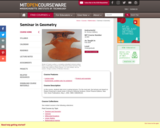
Seminar for mathematics majors. Students present and discuss the subject matter, taken from current journals or books and write up exercises. Topic for spring 2003: Elementary topological properties of differentiable manifolds. Topics covered include Sard's theorem, the Thom transversality theorem, vector fields and the Poincare-Hopf theorem, and cohomolgy via differential forms. Prerequisites subject to negotiation with the instructor. Instruction and practice in oral communication provided. In this course, students take turns in giving lectures. For the most part, the lectures are based on Robert Osserman's classic book A Survey of Minimal Surfaces, Dover Phoenix Editions. New York: Dover Publications, May 1, 2002. ISBN: 0486495140.
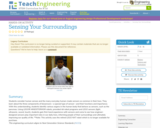
Students consider human senses and the many everyday human-made sensors so common in their lives. They learn about the three components of biosensorsâa special type of sensorâand their functions and importance. With this understanding, students identify various organs in the human body that behave as sensors, such as the pancreas. Using LEGO® MINDSTORMS® NXT robots, provided rbt robot programs and LEGO sensors (light, ultrasonic, sound, touch), students gain first-hand experience with sensors and come to see how engineer-designed sensors play important roles in our daily lives, informing people of their surroundings and ultimately improving our quality of life.
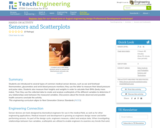
Students are introduced to several types of common medical sensor devices, such as ear and forehead thermometers, glucometers and wrist blood pressure monitors; they use the latter to measure their blood pressure and pulse rates. Students also measure their heights and weights in order to calculate their BMIs (body mass index). Then they use the collected data to create and analyze scatterplots of the different variables to determine if any relationships exist between the measured variables. Discussions about the trends observed and possible health concerns conclude the activity.

The earliest explorers did not have computers or satellites to help them know their exact location. The most accurate tool developed was the sextant to determine latitude and longitude. In this activity, the sextant is introduced and discussed with the class. Students will learn how a sextant can be a reliable tool that is still being used by today's navigators and how computers can help assure accuracy when measuring angles. Also, this activity will show how computers can be used to understand equations even when knowing how to do the math is unknown.
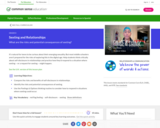
It's natural for teens to be curious about their emerging sexuality. But most middle schoolers aren't prepared for the risks of exploring this in the digital age. Help students think critically about self-disclosure in relationships and practice how they'd respond to a situation where sexting -- or a request for sexting -- might happen.

Students investigate the critical nature of foundations as they learn differences between shallow and deep foundations, including the concepts of bearing pressure and settlement. Using models representing a shallow foundation and a deep pile foundation, they test, see and feel the effects in a cardboard box test bed composed of layers of pebbles, soil and sand. They also make bearing pressure calculations and recommendations for which type of foundations to use in various engineering scenarios.
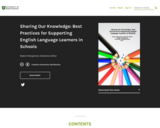
To complete the course ECUR 415.3: Current Issues in EAL, students are required to submit a final paper that reflects their growing knowledge about English as an Additional Language (EAL). EAL is the term used in Saskatchewan to describe students who speak languages other than English and require adequate levels of English to be successful with the school curriculum.
Most students enrolled in the online course ECUR 415 are practicing teachers who are working toward a Post-Degree Certificate in EAL Education (PDCEAL), while continuing to live and work in various locations both within and outside of the province. The certificate program, offered through the College of Education, University of Saskatchewan, is recognized by provincial education authorities as being equivalent to one full year of post-degree study. As such, the certificate equips teachers with the knowledge and expertise to be considered teacher-specialists of EAL Education. The course ECUR 415 also attracts some pre-service teachers who are pursuing a Bachelor of Education degree and have an interest in EAL Education.
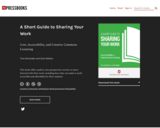
This book offers authors new perspectives on how to move forward with their work, including how they can make it easily accessible and affordable for their students.
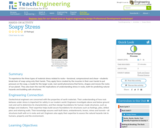
To experience the three types of material stress related to rocks â tensional, compressional and shear â students break bars of soap using only their hands. They apply force created by the muscles in their own hands to put pressure on the soap, a model for the larger scale, real-world phenomena that forms, shapes and moves the rocks of our planet. They also learn the real-life implications of understanding stress in rocks, both for predicting natural hazards and building safe structures.
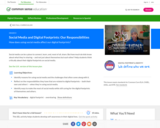
Social media can be a place to connect, learn, and, most of all, share. But how much do kids know about what they're sharing -- and not just about themselves but each other? Help students think critically about their digital footprints on social media.

Social media plays a big role in most teens' lives, and research shows that it causes intense feelings -- both positive and negative. But not all media use is the same. There are many benefits that come with both active and passive media use. For better social and emotional well-being, encourage students to become creators of digital media, not just consumers.
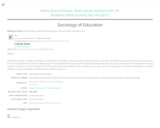
Through this module, sociology of education, a subject that is not taught in secondary schools, you will acquire a very important intellectual asset for your future teaching career. It is the only subject that can give you a better grasp of the overall education process and the meaning of teaching practices, and raise your awareness of the imperatives of social dynamics. However, we must not forget that a truly professional understanding of the education process also requires the acquisition of scientific knowledge from related disciplines such as psychology, philosophy, history, statistics, and so on.
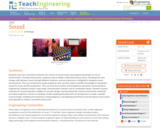
Students learn the connections between the science of sound waves and engineering design for sound environments. Through three lessons, students come to better understand sound waves, including how they change with distance, travel through different mediums, and are enhanced or mitigated in designed sound environments. They are introduced to audio engineers who use their expert scientific knowledge to manipulate sound for music and film production. They see how the invention of the telephone pioneered communications engineering, leading to today's long-range communication industry and its worldwide impact. Students analyze materials for sound properties suitable for acoustic design, learning about the varied environments created by acoustical engineers. Hands-on activities include modeling the placement of microphones to create a specific musical image, modeling and analyzing a string telephone, and applyling what they've learned about sound waves and materials to model a controlled sound room.
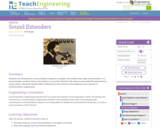
In this lesson, students are introduced to communications engineers as people who enable long-range communication. In the lesson demonstration, students discuss the tendency of sound to diminish with distance and model this phenomenon using a slinky. Finally, Alexander Graham Bell is introduced as the inventor of the telephone and a pioneer in communications engineering.
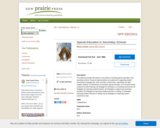
This textbook provides information on the practice of teaching special education in the secondary schools. Research-based practices are explained for supporting student functioning in language arts, math, and other content areas. Specifically, the eight chapters address: (1) Introduction to secondary special education; (2) Curriculum-based measures to inform learning; (3) Strategies for working in a co-teaching environment; (4) Strategies for improving student behavior; (5) Strategies to support post-secondary transition; (6) Strategies for improving student outcomes in reading; (7) Strategies improving student outcomes in writing; and (8) Strategies for improving student outcomes in math.

In a spin-off to studying about angular momentum, students use basic methods of comparative mythology to consider why spinning and weaving are common motifs in creation of myths and folktales. Note: The literacy activities for the Mechanics unit are based on physical themes that have broad application to our experience in the world â concepts of rhythm, balance, spin, gravity, levity, inertia, momentum, friction, stress and tension.

Spotter is a program that lets students check their answers to math and science questions. It handles symbolic as well as numerical answers. The software is free and open source.
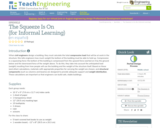
Students design and build structures to support the weight of books for 15 seconds.
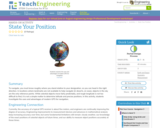
To navigate, you must know roughly where you stand relative to your designation, so you can head in the right direction. In locations where landmarks are not available to help navigate (in deserts, on seas), objects in the sky are the only reference points. While celestial objects move fairly predictably, and rough longitude is not too difficult to find, it is not a simple matter to determine latitude and precise positions. In this activity, students investigate the uses and advantages of modern GPS for navigation.